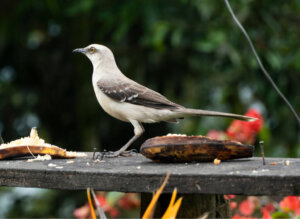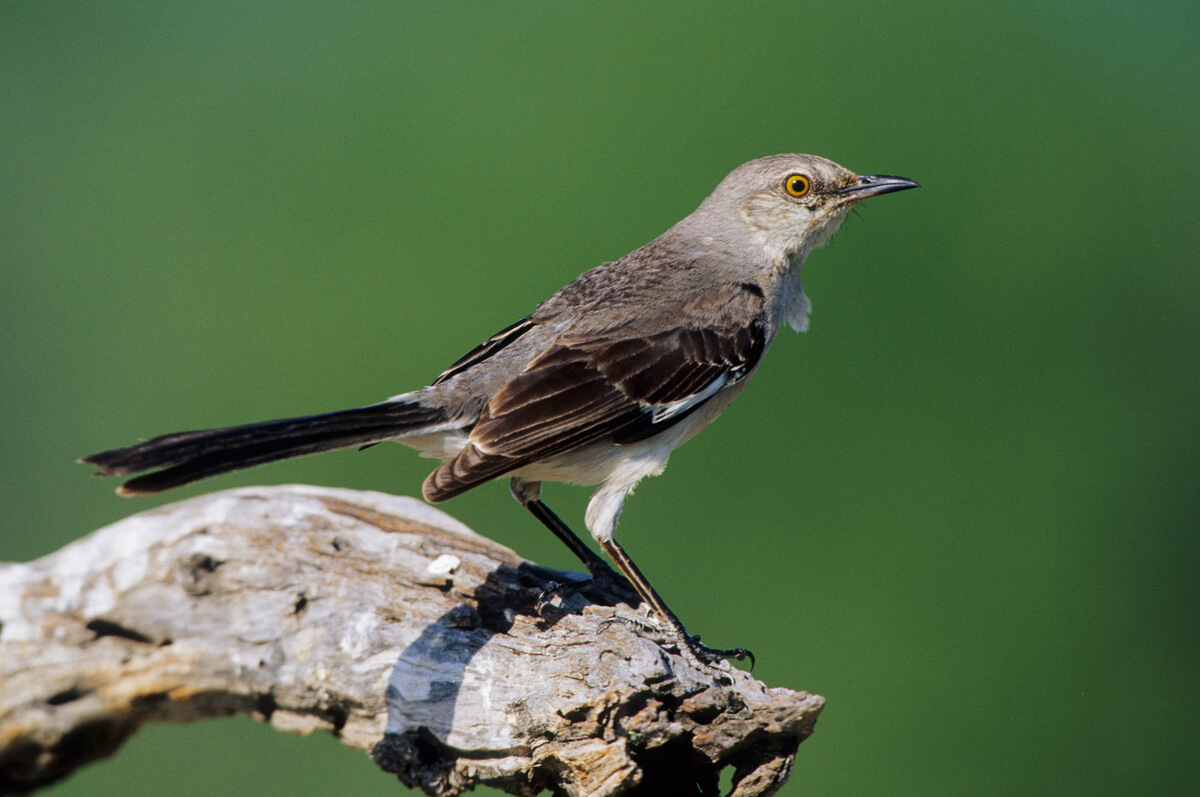The Wonderful Song of the Mockingbird

Some birds are known for their colorful colors and others for their song, as is the case of the Northern mockingbird (Mimus polyglottos). This small passerine bird has the peculiarity of imitating the song of other birds, animal tones, and even artificial sounds.
The Northern mockingbird inhabits the lands of North America, Central America, the Caribbean, and Puerto Rico. Despite sharing the same name, it doesn’t belong to the same family as the common mockingbird, although physically both are very similar.
What does the mockingbird look like?
The Northern mockingbird is a passerine bird about 22 centimeters (9 inches) in length and 31 to 36 centimeters in wingspan (12-14 inches), similar to the size of a blackbird. It’s gray in color, darker on the dorsal parts, and pale on the ventral parts.
It also has a pair of white stripes on the wings, specifically at the ends of the medium and large covert feathers and on both sides of the tail, which is long, rounded at the tip, and with a central black line.

What is its song famous for?
This bird imitates the calls of other birds and animal sounds – even artificial tones – but the species also has a primary song used by males to attract females in spring and early summer. This song may have slight variation depending on the territories.
In general, mimic birds – those that mimic the song of other birds – prefer dense, shrub-based habitats that offer little visibility. Thus, for these species, singing is an important tool for socializing, and they do it incessantly. In part, this ensures their breeding success.
Mockingbird sexual selection
Northern mockingbirds are diurnal, solitary birds. Males are territorial and demarcate their area through song, which they also use to attract females. During courtship, they perform displays that, together with their song, serve to attract the attention of potential breeding partners.
The mockingbird’s singing style makes it distinguishable, regardless of the patterns it uses, due to the high continuity of its song. Versatile songbirds tend to be continuous singers. In addition, imitation helps them to enhance the individual character of a song, as no two individuals are likely to have exactly the same tones.
Males with larger song repertoires have a greater advantage in acquiring territories, attracting mates, and excluding potential competitors from their territory.
Age and experience are indicative of survival skills and resource procurement and are reflected in the different songs a male mockingbird can perform. These qualities are valued by females when choosing mates and leaving offspring.
Although the mockingbird now also inhabits urban areas, it appears to have retained this evolutionary strategy from its forest ancestors.
Other mimic birds
The northern mockingbird isn’t the only mimic bird species. One of the best-known is the lyrebird (Menura novaehollandiae), endemic to the forests of Australia.
This pheasant-like bird has a short, species-specific song that can be heard up to a kilometer away and also displays local dialects like the mockingbird, but the most characteristic is its power of mimicry.
Males can imitate almost any sound, such as older males and other bird species, to mechanical sounds, such as a camera shutter, a car alarm, or even a chainsaw.
As with the mockingbird, song seems to be important when searching for a mate and avoiding potential competitors, and imitation provides enough ability to make it versatile.
Song is one of the forms of communication in birds, and is very important in many aspects of their lives. It helps them to mark territory and search for, locate, and call a mate, among other things. Singing has an important innate and learned component and, as we have seen, it isn’t unique to a particular species.
All cited sources were thoroughly reviewed by our team to ensure their quality, reliability, currency, and validity. The bibliography of this article was considered reliable and of academic or scientific accuracy.
- Structure in Primary Song of the Mockingbird (Mimus polyglottos). (1965). The Auk, 82(2), 161–189.
- Howard, R. (1974). The Influence of Sexual Selection and Interspecific Competition on Mockingbird Song (Mimus polyglottos). Evolution, 28(3), 428-438.
This text is provided for informational purposes only and does not replace consultation with a professional. If in doubt, consult your specialist.